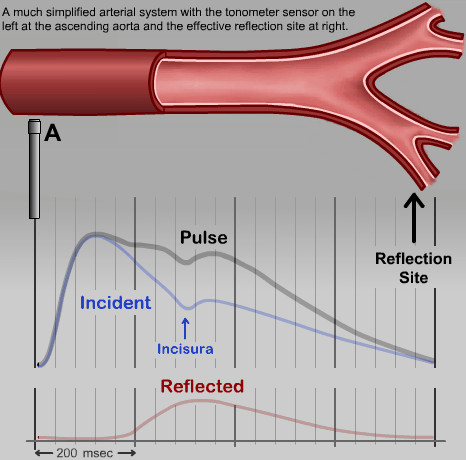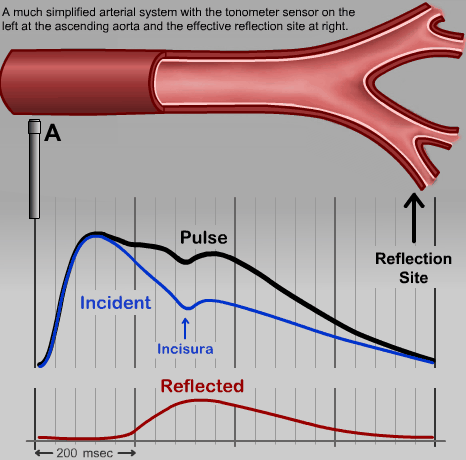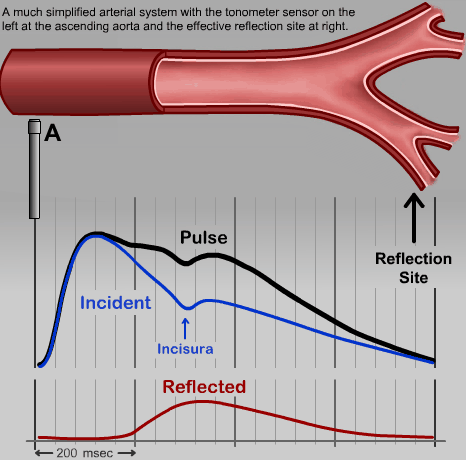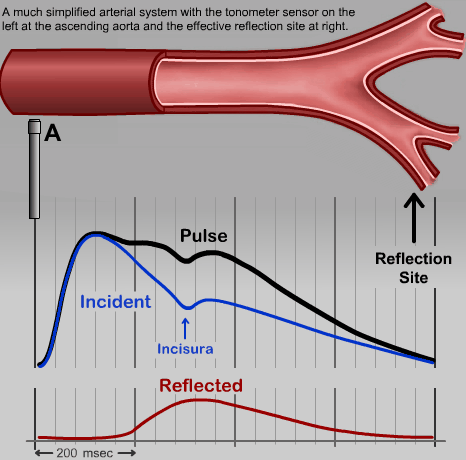Animation Title
PULSE OF ARTERIES
Animation header
The beginning of the incident pressure wave generated by the heart (blue) is shown traveling down the artery. When the wavefront encounters a change in vessel impedance (e.g., a change in resistance), a reflected wave (red) is generated and travels back toward the heart.
In the arterial system, resistance remains relatively constant through the large arteries, but increases significantly at the level of the arterioles. Thus, the arterioles represent the major site of origin of the reflected wave.
These incident and reflected waves combine to produce the pressure at any point in the arterial system.The pressure waveform sensed by a transducer (and the arterial wall) at point A is shown. The magnitude and shape of the combined pressure wave depend on both the speed at which the waves travel up and down the arteries (the pulse wave velocity) and the strength of the reflected wave.



